We Are Water Protectors
 March 31st, 2020 by jules
March 31st, 2020 by jules
From my village’s water. I must rally my people together.”
(Click each image to enlarge)
Today, illustrator Michaela Goade shares some process images and final art from the making of Carole Lindstrom’s new picture book, We Are Water Protectors (Roaring Brook, March 2020). I am so pleased she shares these images; I feel like I’m standing right next to her drawing table, which is thrilling (and not just because I haven’t left my home in over two weeks).
Carole, born and raised in Nebraska, is Anishinaabe/Métis and is tribally enrolled with the Turtle Mountain Band of Ojibwe. Michaela, who makes her home in Alaska, is of Tlingit descent and is tribally enrolled with the Central Council of the Tlingit and Haida Indian Tribes of Alaska. Their new book is a rallying cry for environmental justice from indigenous peoples. Writes Carole in the book’s closing note:
Humans have been mistreating Mother Earth for millennia, and Indigenous Peoples have long acted as stewards of the planet, giving a voice to our silent home.
In a lyrical and rhythmic text, she writes about a young indigenous girl — the story is told from her point of view — and what she has learned from her Nokomis (the Ojibwe term for grandmother). She has learned that, essentially, water is life, water is sacred, and it is the “first medicine.” Water nourishes us. “The river’s rhythm runs through my veins,” the girl says. She then turns her attention to the “black snake,” or a pipeline being laid in the land that threatens to destroy it, as well as contaminate the water and “wreck everything in its path.” As seen in the spread opening this post, the girl and her village are determined to fight the black snake and to stand for the water and their land.
Michaela fills these images with the graceful, flowing lines of rivers, and her palette is one of various shades of water — deep, rich blues; aqua hues; and warm lavenders. This is offset by the brilliant rose shades in the setting sun. She also fills these spreads with details of Carole’s Ojibwe culture. She writes in a closing note:
[O]ur main protagonist changes into her traditional ribbon skirt as she rallies her people. Additionally, many of the animals included in the book reflect Anishinaabe/Ojibwe clan symbols or hold special significance in traditional teachings, while the repeated floral designs were inspired by traditional Anishinaabe woodland floral motifs.
The book’s backmatter delves into examples of tribal nations fighting oil pipelines, such as the fight against the Dakota Access Pipeline. Carole also explains how it is that the Ojibwe culture sees themselves as protectors of water, making specific mention of the Anishinaabe Seven Fires Prophecy (that humans choose a natural path that leads to a healthy earth). The book even closes with an “Earth Steward and Water Protector Pledge” that readers can sign. As Carole writes: “This is not just a Native American issue; this is a humanitarian issue.”
It’s a stirring book. As Booklist writes, “these pages carry grief, but it is overshadowed by hope in what is an unapologetic call to action.” Here are images from Michaela, and I thank her for sharing.
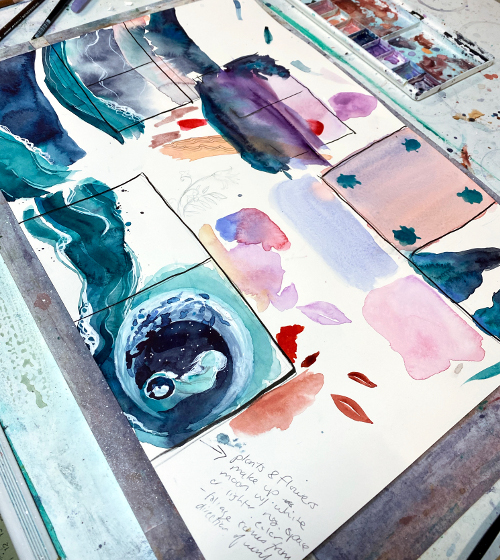
(Click to enlarge)
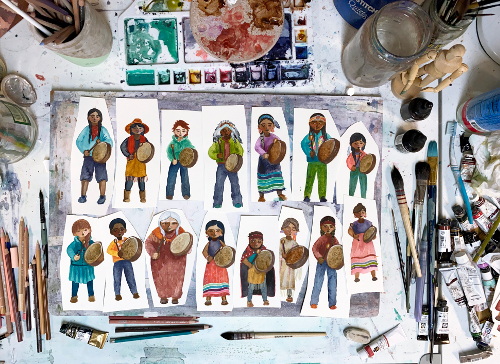
(Click to enlarge)
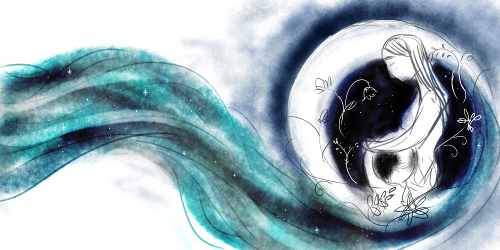
(Click to enlarge)
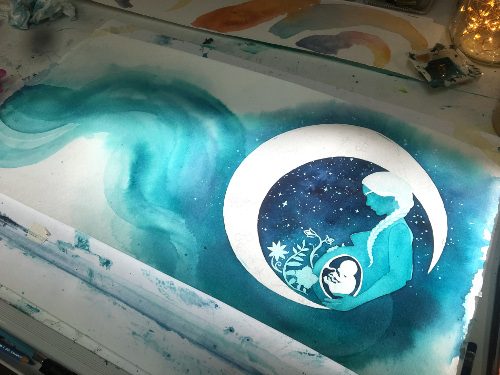
(Click to enlarge)
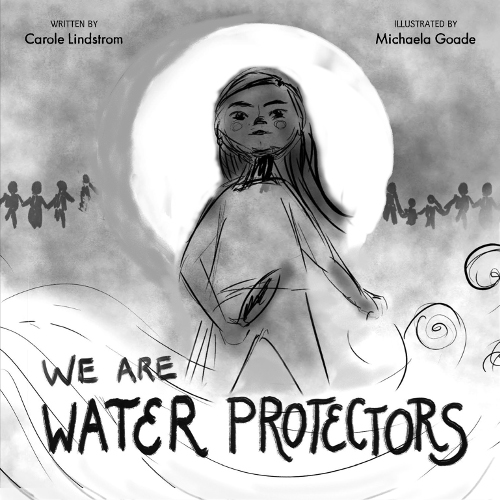
(Click to enlarge)
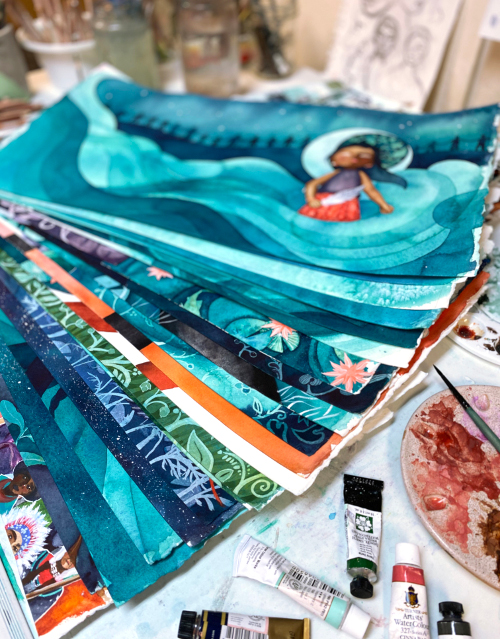
(Click to enlarge)
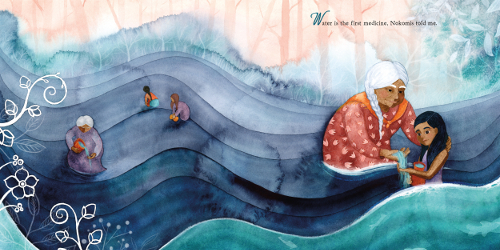
(Click spread to enlarge)
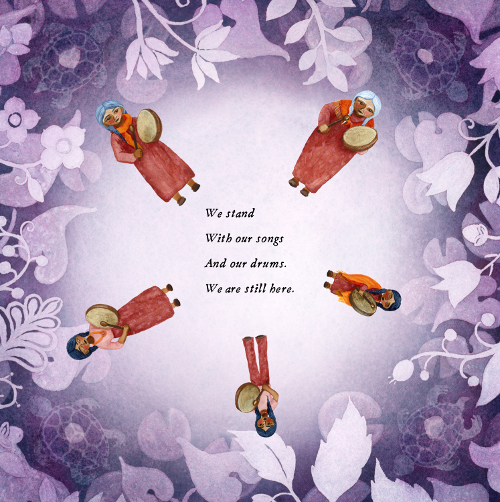
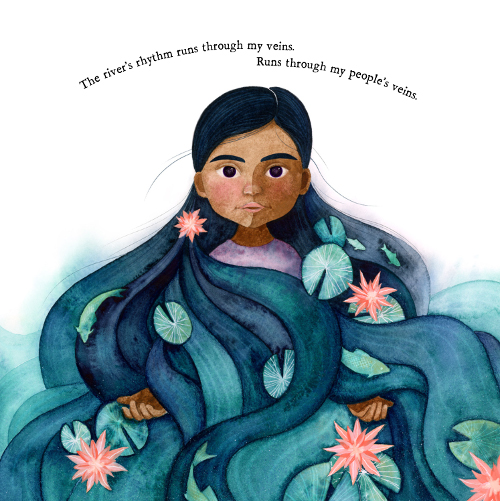
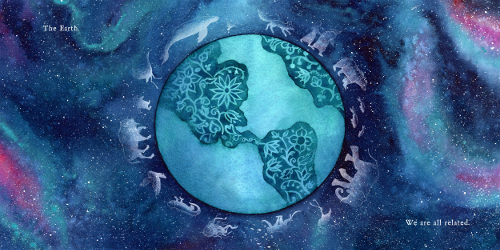
(Click spread to enlarge)
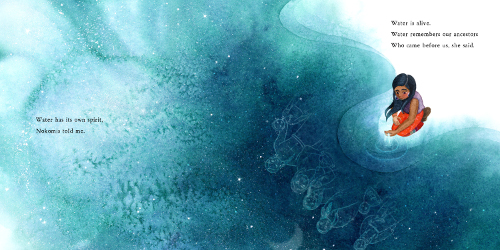
Water is alive. Water remembers our ancestors
Who came before us, she said.”
(Click spread to enlarge)
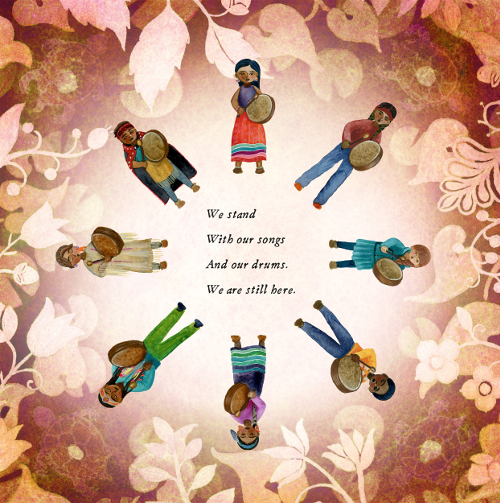
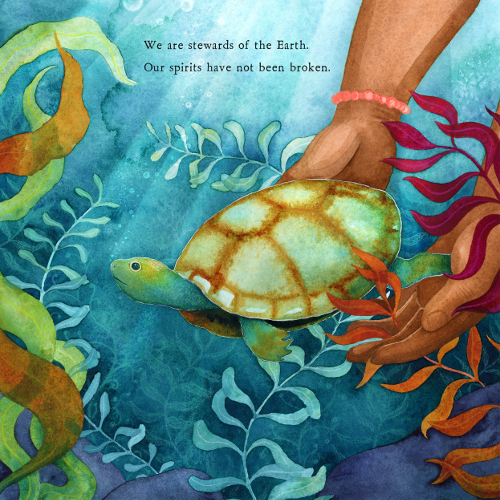
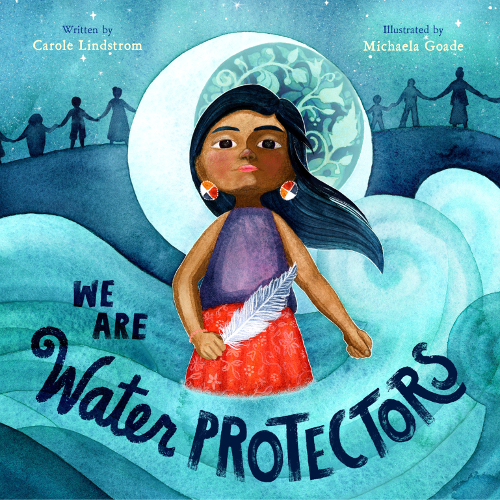
WE ARE WATER PROTECTORS. Text copyright © 2020 by Carole Lindstrom. Illustrations copyright © 2020 by Michaela Goade and reproduced by permission of the publisher, Roaring Brook Press, New York. All preliminary images reproduced by permission of Michaela Goade.
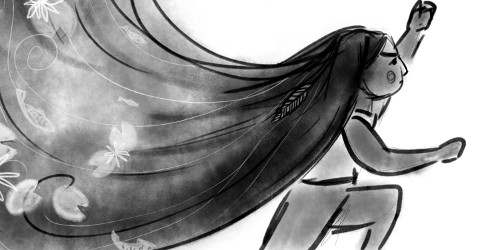
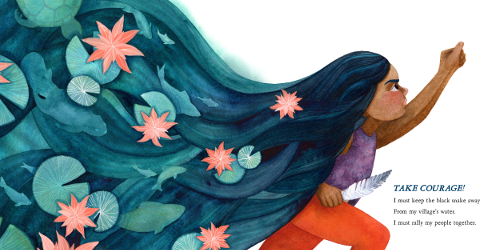

This is beautiful and much needed right now! The illustrations are so lush and commanding. Preach!
This is breathtakingly beautiful! I haven’t read this yet and can’t wait to order!
This was a great look into the process of creation in regards to the book art. This book is an interesting piece for someone who is learning about the social justice and environmental issues that indigenous people need to deal with as well as what the governments need to work towards reconciling. The artistic aspects of this story certainly deserve a careful look at for secondary school audience as well.